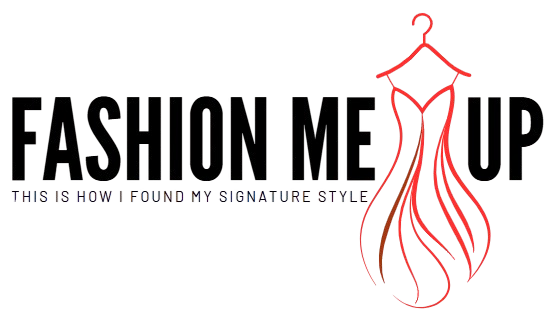
In a world of fast fashion and fleeting trends, how to create a vintage-inspired wardrobe has become a sartorial quest for those seeking individuality, sustainability, and nostalgia. A vintage-inspired wardrobe isn’t about cosplaying the past—it’s a curated fusion of bygone eras, personal storytelling, and modern practicality. Whether you’re drawn to the flapper glam of the 1920s, the tailored elegance of the 1950s, or the bohemian flair of the 1970s, this guide will help you weave retro charm into your everyday style.
1. Decode the Decades: Find Your Era
Every vintage aesthetic tells a story. Begin by immersing yourself in fashion history. Study silhouettes, fabrics, and iconic pieces from your favorite decades. The 1940s celebrated utility with A-line skirts and padded shoulders, while the 1970s embraced flowing maxi dresses and earthy tones. Visit digital archives, old films, or even family photo albums for inspiration.
Pro tip: Don’t limit yourself to one era. The magic of how to create a vintage-inspired wardrobe lies in eclectic combinations—pair a 1960s mod shift dress with 1980s power blazer for a bold, anachronistic look.
2. Thrift Like a Pro: Hunt for Hidden Gems
Thrifting is the cornerstone of vintage curation. Approach it like a treasure hunt: patience and persistence yield the best rewards. Focus on quality over quantity—look for natural fibers like wool, silk, and cotton, which age gracefully. Check seams, zippers, and collars for wear, but don’t dismiss minor flaws; these “imperfections” often add character.
Visit estate sales for well-preserved garments or explore online platforms like Etsy and Depop for specific eras. Remember, sizing has evolved—a 1950s size 12 is closer to a modern 8. Carry a tape measure and prioritize fit over labels.
3. Blend Old and New: Avoid Costume Territory
The key to how to create a vintage-inspired wardrobe is balance. Avoid looking like you’ve stepped out of a time machine by mixing vintage pieces with contemporary basics. Team a 1970s crochet vest with high-waisted jeans, or layer a 1930s art-deco brooch over a minimalist jumpsuit.
Invest in modern neutral staples—white tees, tailored trousers, leather boots—to anchor statement retro items. This juxtaposition creates a “lived-in” aesthetic that feels intentional, not theatrical.
4. Master the Art of Alterations
Vintage clothing rarely fits perfectly, but this is where craftsmanship shines. Forge relationships with a skilled tailor to adjust hemlines, take in waistbands, or replace worn linings. Learn basic sewing skills for minor fixes—replacing buttons or darning moth holes can resurrect a forgotten gem.
Pro tip: Preserve original details like buttons or embroidery during alterations. These nuances are irreplaceable fragments of history.
5. Accessorize with Intention
Accessories are the exclamation points of a vintage ensemble. Hunt for leather gloves, silk scarves, and structured handbags to elevate your look. A 1950s cat-eye sunglasses or a 1980s statement belt can transform a simple outfit into a retro masterpiece.
Don’t overlook haberdashery items—vintage hatpins, cameos, or cufflinks add whimsy and authenticity. Mix metals and textures for a curated-but-carefree vibe.
6. Embrace Color and Pattern Psychology
Each era had its chromatic signatures. The 1960s loved psychedelic prints, while the 1940s favored muted, practical hues. Build a cohesive palette by identifying recurring colors in your favorite vintage pieces. Earth tones, pastels, and jewel tones are timeless anchors.
Incorporate patterns strategically: polka dots for playfulness, houndstooth for sophistication, or florals for romance. Use pattern mixing sparingly—a striped blouse under a floral pinafore can work with chromatic cohesion.
7. DIY Vintage: Upcycle and Reimagine
Not every piece needs to be authentically old. Use modern garments as blank canvases—dye dresses with tea for a sepia tint, add lace trim to collars, or distress denim for a 1970s vibe. Screen-print retro motifs onto plain skirts or crochet your own granny-square cardigan.
Upcycling breathes new life into thrifted finds. Turn a oversized 1980s blazer into a cropped bolero or transform a tablecloth into a prairie dress.
8. Build a Capsule Collection
A successful how to create a vintage-inspired wardrobe strategy hinges on versatility. Curate 15–20 interchangeable pieces that reflect your chosen eras. Include:
- Statement coats: Trench, faux-fur, or tweed
- Dresses: Shirtwaist, shift, or wrap styles
- Separates: High-waisted trousers, pencil skirts, knit vests
- Footwear: Oxfords, saddle shoes, or block-heeled boots
Rotate seasonal items—lightweight linens for summer, woolens for winter—to keep your wardrobe functional year-round.
9. Care for Your Time-Traveling Threads
Vintage fabrics demand gentle stewardship. Hand-wash delicates in lukewarm water with mild detergent. Store woolens in cedar chests to deter moths, and hang silk garments on padded hangers. For stubborn stains, consult a textile conservator—harsh chemicals can erase decades of patina.
Embrace the beauty of aging: slight fading or softened elbows add soul. Remember, these pieces have survived decades; treat them as heirlooms, not disposables.
10. Confidence: The Ultimate Vintage Accessory
The most iconic vintage enthusiasts—think Bianca Jagger or Katharine Hepburn—wore their clothes with unapologetic confidence. Don’t save your best pieces for “special occasions.” Pair a sequined 1920s flapper dress with sneakers for brunch, or rock a 1970s caftan at the grocery store.
Style is storytelling. Let your wardrobe whisper tales of the past while shouting your unique personality.
11. Sustainability: Fashion’s Full Circle
Choosing vintage isn’t just stylish—it’s ethical. By repurposing existing garments, you reduce textile waste and carbon footprints. Share your journey online to inspire others; host clothing swaps or teach mending workshops.
Final Stitch: Your Vintage-Inspired Legacy
How to create a vintage-inspired wardrobe is less about rules and more about curiosity. It’s a celebration of craftsmanship, history, and self-expression. Start small—maybe with a single retro accessory—and let your collection evolve organically. Remember, every scuff, stitch, and stain is a badge of honor, a testament to garments that have lived, loved, and now live again through you.

